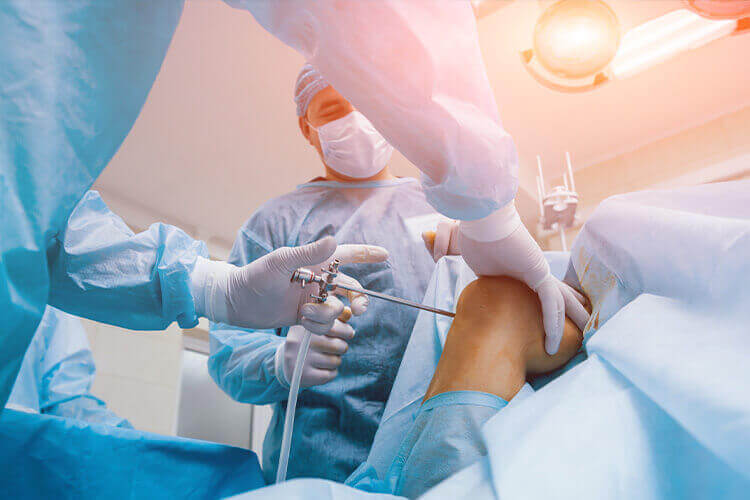
Arthroscopy is a minimally invasive surgical technique used for diagnosing and treating joint diseases. During the procedure, a pencil-sized instrument called an "arthroscope," equipped with a lens and lighting system, is inserted into the shoulder, knee, hip, or ankle joint. This optical system allows the surgeon to obtain detailed images from inside the joint, magnified up to 8-10 times, for a comprehensive examination.
Compared to traditional surgical methods, arthroscopy offers several advantages. It can be completed in a shorter time, images and records can be saved, and it provides access to hard-to-reach areas. Moreover, it has become the most commonly applied procedure in orthopedic surgery today.
One of the significant benefits of arthroscopy is the minimal impact on healthy tissues. The procedure involves small incisions, resulting in reduced post-surgical pain, faster recovery, and an earlier return to an active lifestyle. Additionally, arthroscopy is particularly advantageous for athletes and individuals engaged in sports.

Knee arthroscopy is a surgical procedure employed to treat various knee joint injuries and conditions, such as meniscus tears, anterior cruciate ligament (ACL) injuries, joint cartilage issues, inflammatory joint conditions, synovitis, knee joint arthritis, and joint fractures.
Arthroscopic methods are utilized to treat patients with meniscus tears, where pain persists despite medication. Additionally, individuals experiencing recurrent knee locking or unsteady steps can benefit from arthroscopic intervention. Postoperative rehabilitation plays a crucial role in the treatment process.
Patients can return home shortly after meniscus surgery and are able to walk and climb stairs without support approximately two hours post-operation. After seven days of ice treatment and rest at home, they can resume their normal activities. Running is typically possible after three weeks, and sports activities can be resumed at the end of the first month.
For patients with ACL injuries, the objectives of arthroscopic treatment are to alleviate feelings of knee instability, regain balance during movement, and ensure a strong knee capable of supporting physical activities safely. The procedure involves reconstructing the ACL using tissues similar to the original ligament. Post-surgery, patients may be asked to use knee braces for support.
After ACL reconstruction, patients usually stay in the hospital for 1-3 days. They can begin walking with crutches on the same day as the surgery and start knee exercises the following day, aiming to achieve a 90-degree knee bend. Crutches are used for a few days to reduce knee load. The goal is to regain pre-injury movement capabilities within three weeks.
Post-surgery, physical treatment and rehabilitation are crucial to increase muscle strength and improve joint function, facilitating a successful recovery and a return to regular activities.
After arthroscopy, physical therapy and rehabilitation can begin earlier since the joint is not fully opened. The exercise program following arthroscopy significantly lowers the risk of decreased joint movement compared to open surgery. Overall, the recovery period for arthroscopy is much shorter and more manageable, making it a preferred choice for joint-related issues.

All procedures includes: Treatment, Post Operative Medication, Pre & Post Consultation, Tests & Analysis.
The cost of operations can vary depending on the type of procedure performed and any additional treatments that may be added.

Prices are constantly rising, but don't worry, make a $100 deposit right now and make your reservation.